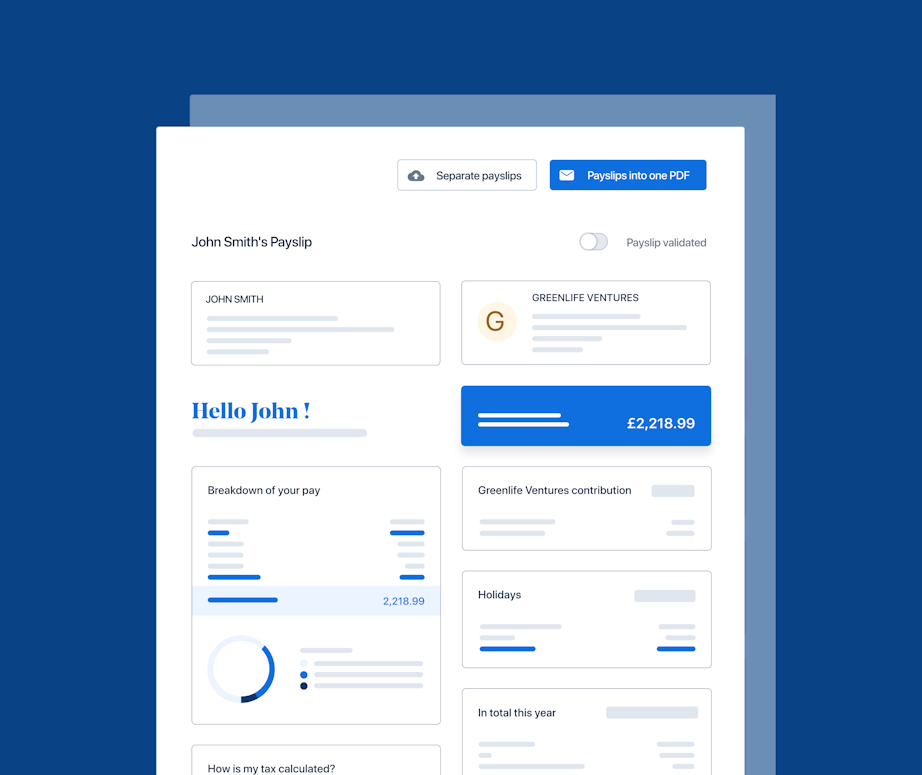What is a Performance Management Plan (And How to Create One)?

Creating a performance management plan and measuring employee performance benefits both employees and employers. Following a plan means employees feel more motivated and productive at work; seeing the impact they’ve had on their teams' or overall company performance can be a significant morale booster.
And for HR managers and team leaders? Having staff follow these plans makes it easier to identify underperforming team members, identify skills gaps and drive focused recruitment strategies.
What is a performance management plan?
A performance management plan is part of the performance management process a strategic process to improve organisational performance, ultimately helping you achieve business goals. When employees don’t understand expectations or have direction, productivity, ultimately affecting the bottom line, and you’ll want to avoid that as much as possible!
A performance management plan, not to be confused with a performance improvement plan template (PIP) can help set clear, measurable goals for employees so they understand how to optimise their performance best, reducing turnover, improving output and contributing to the company’s overall success.
What is a performance improvement plan (PIP) VS a performance management plan?
Although they sound similar, they have different purposes and different timelines. Where a performance management plan is set in place for all employees to help them get the best out of themselves, a professional improvement plan template is more focused on improving underperforming employees and setting them on a better track over a specific time period.
Both help improve employee performance, but a PIP template is a little more targeted and more of a formal process with HR than a performance management plan.
Why an effective performance management plan is essential
Without effective employee performance management there’s no targeted strategy in place to improve overall employee performance. Instead, your employees are effectively flying solo without knowing how their performance affects business goals and whether they’re even aligned with them in the first place.
Everyone needs to work towards the same overarching goals, but to do that, you need to understand how each employee is performing and whether they could do it with a bit of tweaking and the right support to help them (and you) flourish.
Having an effective performance management plan in place can also help HR managers quickly identify skills gaps, helping drive focused talent management strategies, which again, helps the business achieve critical growth goals.
Other benefits of an effective performance management plan:
Boosts staff motivation by encouraging better team morale and confidence
Helps you achieve business success by aligning your team members with your overarching goals
Identifies skill gaps and helps address underperforming staff through a structured process
What should be included in a performance management plan?
An employee performance management plan will look very different for each organisation, but the core components should remain the same. So here are five components you might want to consider when you create a performance management plan.
1. Evaluating
Before you start to outline goals, it’s crucial to understand how the employee is currently performing. This is as much an exercise for HR as it is for the employee; both need to understand where skill gaps lie and at what level they should be performing at.
The employee might already have a good idea of what their strengths and weaknesses are, but chat with management and other team leaders to see what you could improve upon — this gives you a benchmark to move forward from.
2. Goal setting
Goal setting is an essential part of performance management; without it, employees aren’t focused, no one knows what’s expected of them, and they can quickly disengage from their work.
Work on setting SMART goals — specific, measurable, achievable, realistic and time-bound. That means they’re not plucked out of thin air and actually contribute to achieving your company’s goals.
Setting goals is essential to keep your employees motivated and focused on the task at hand. You might decide to set personal goals for each employee and include larger business goals that everyone is working towards.
3. Planning
How will you help your employees reach their performance metrics? Perhaps through guided support and training or by giving them access to the best tools and resources to help them improve productivity and efficiency.
You should lay out your action plan clearly so employees don't become overwhelmed by the end goal. And instead, feel the plan is achievable.
4. Monitoring
Even after you’ve set goals, you can’t just expect the employee to go away, understand everything and deliver good results. You need to monitor their performance against your key performance indicators (KPIs) and give them helpful feedback, too.
Regular check-ins in tandem with more official performance reviews mean you can address any issues mid-plan rollout rather than waiting until the end of the strategic process to address all sorts of problems that could have been fixed months prior.
5. Recognising
Recognition for achievements is so important. 65% of employees say if management acknowledged their efforts in the workplace, they would work harder. So, how can you recognise individual achievements? You can verbally congratulate them in team meetings or show gratitude with a rewards scheme such as employee perk subscriptions or gift cards/vouchers.
Employees want to see that what they’ve done has made a positive difference to the company, so don’t underestimate the power of a simple ‘thank you’.
Here are some questions you might ask when creating a performance management plan template
What motivates you in your role?
What achievements were you most proud of in our last review period?
Which areas do you think we need to improve on?
Do you need any additional resources or support to help your team reach goals?
How can we make the working environment more productive?
Best practices when creating a performance management plan
Never implemented a performance management plan before? Here are some best practices to keep in mind.
Always set clear expectations
Aside from goal setting, it's incredibly important you communicate your expectations to each and every staff member. Incoherent or inconsistent communication can be common in the workplace, so clearly communicate from the very start of your plan so you’re both on the same page.
Keep your plan agile
Sometimes, things change. Whether that’s the direction of the company, a shift in goal focus or team and individual responsibilities. No plan should be static; that’s why regularly monitoring progress gives you the opportunity to amend the performance plan to fit in with current company or team goals.
Offer continued support and training
You can’t expect every employee to suddenly develop new skills. To upskill them and make them even more valuable to your company, invest in training and development programmes to help them feel more confident and valued in their role. You might not even need to pay for training; they could just shadow someone already doing part of the job, encouraging team collaboration and knowledge sharing.
How PayFit Helps Your Performance Management Planning
Although measuring employee performance sounds all-consuming, there's software to help you every step of the way. At PayFit, our comprehensive HR software helps you navigate the trials and tribulations of HR, including managing employee performance…
Effortlessly create customised performance review campaigns. Our performance management software removes all unnecessary admin tasks, including scheduling regular performance reviews. Simply select a review template from our platform, create a timeline and launch. Employees will receive notifications to fill in their reviews, so there’s no chasing from your end.
Store your performance management plan in our employee portal. Employees can serve themselves, accessing important documents whenever they need to, including their performance management plan. Stored digitally, if you make amends to the plan, they’ll always access the most recent version.
We have HR experts on hand to help you. Got an HR question? Our HR experts are here to help you navigate performance management planning. And we’ve got a substantial resource centre helping you stay abreast of all the latest HR changes, sharing best practices and helpful HR templates (like this performance review template).
Ready to kick start your performance management planning? Book a demo to explore all our HR features in depth.

What is a Pro-Rata Salary and How Do You Calculate It
The Alabaster Ruling & Maternity Pay - A Guide For Employers
PAYE For Employers In The UK - A Guide
Allowable & Disallowable Expenses - What Are They?
Occupational Sick Pay (OSP) - A Guide For UK Employers







